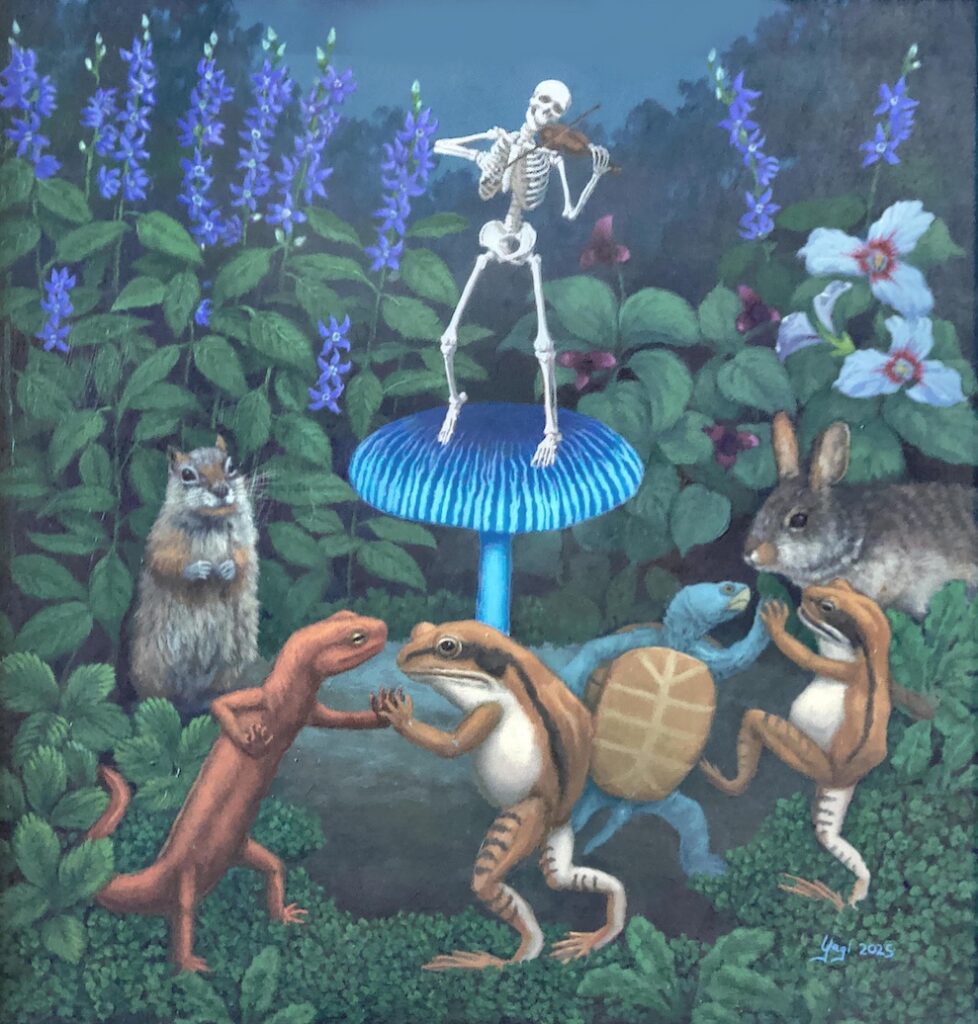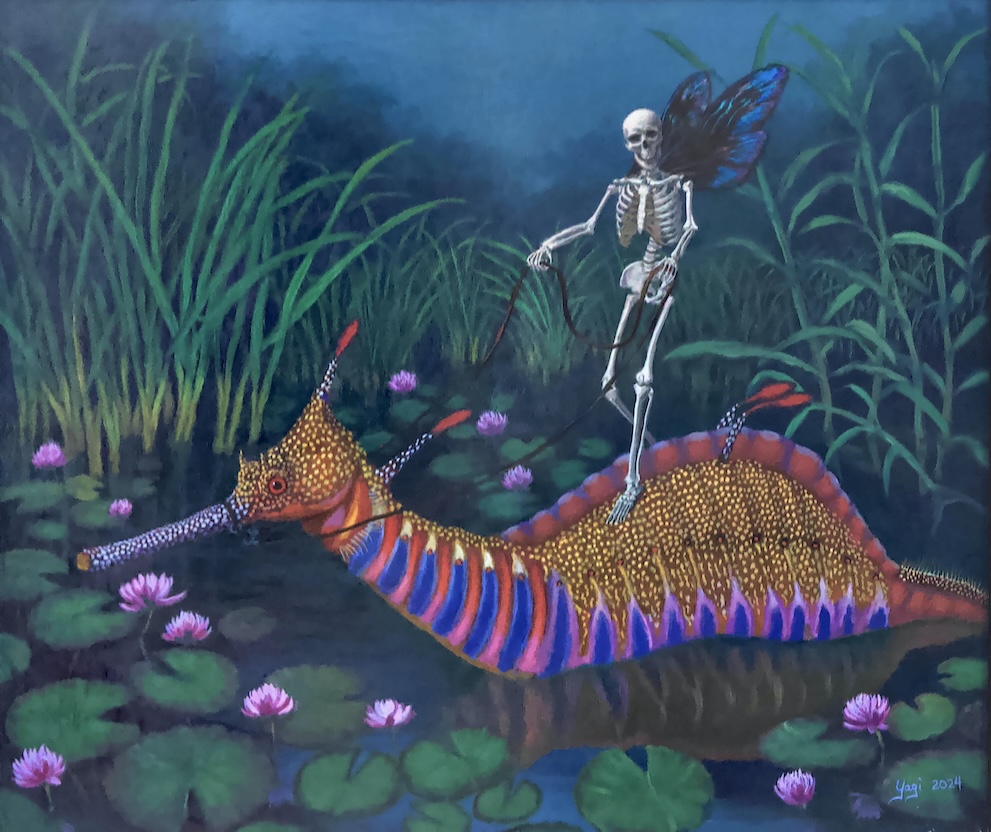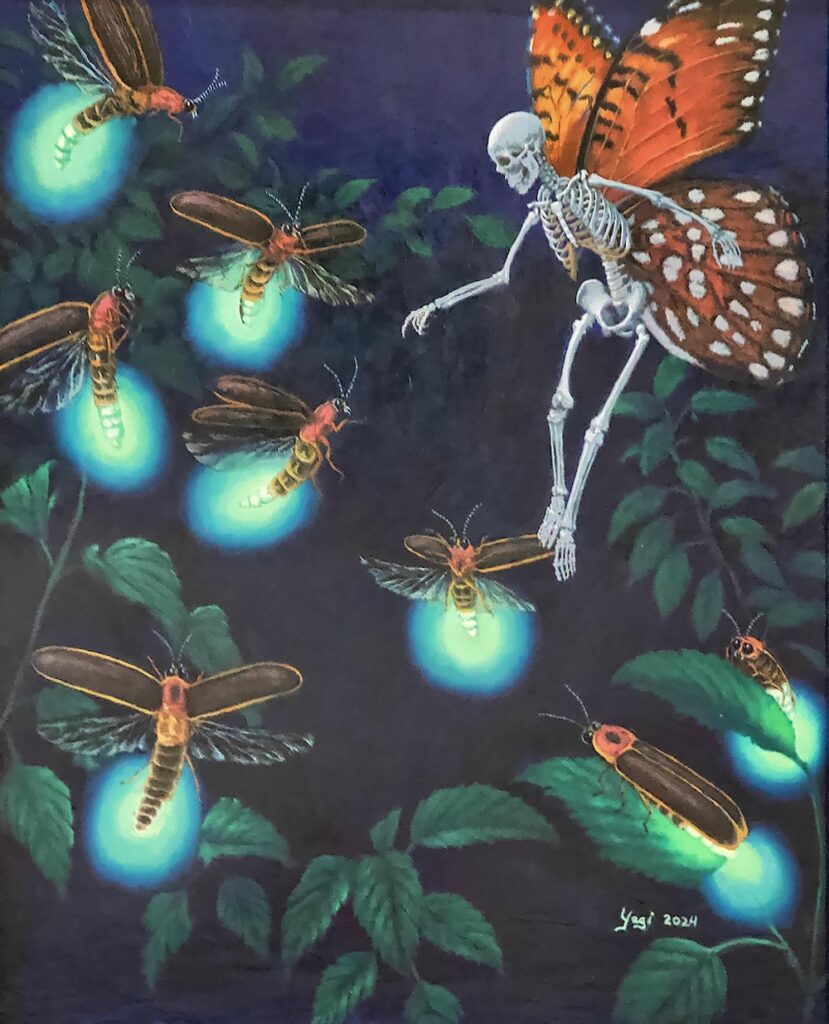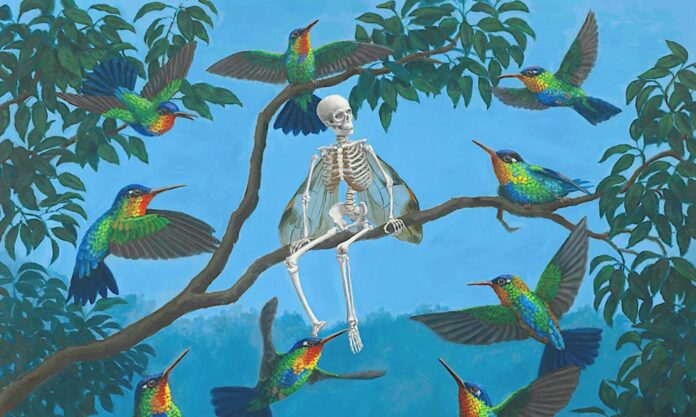“The recognition of their existence will jolt the material 20th-century mind out of its ruts in the mud, and force it to admit that there is glamour and mystery to life,” held Arthur Conan Doyle in The Coming of the Fairies, his book on the infamous 1917 Cottingley fairy photos. The shots would later turn out to be fabricated—photo blowups mounted on cardboard and held in place by string—by two young Yorkshire girls, using a relative’s darkroom
All the same, and as indicated by Conan Doyle’s rapture, the mythological and supernatural worlds have fascinated humanity since the very beginning. Even in this scientific digital age, we remain ready to be carried away by enchantment. The word glamour itself, of course, once had magical connotations.

Even Conan Doyle—a trained doctor; the creator of the thinking-machine detective, Sherlock Holmes; and one of the practical jokers behind the 1912 Piltdown Man hoax mocking one of his teachers—was deceived during the heyday of spiritualism and theosophy after the Great War, and he never recanted. Incidentally, his uncle, Richard Doyle, and his father, Charles Doyle, were artists who depicted supernatural beings. Richard Doyle apparently flourished professionally; Charles Doyle, weakened by alcoholism and epilepsy, succumbed and was confined to an asylum. He once painted himself being gnawed upon (“worried”) by a demon.
Doyle family aside, one might argue that artists who create archetypes and metaphors lend the logic of the visible to the service of the invisible (in the words of the French visionary Odilon Redon) are more impervious to quacks and demagogues—let alone messiahs—than the proudly uninformed, irascible champions of common sense and consensual reality.
The meticulously rendered oil-panel paintings of Sandra Yagi‘s show The Faeire Realm (through May 1 at Modern Eden) combine the creative’s lifelong interests in art and biology, depicting a miniature fairyland of butterflies, snails, hummingbirds, fireflies, and fish, as well as larger quadrupeds, set in unspoiled grasslands, meadows, forests, and marshes. These climes are not unlike those of Yorkshire a century ago, or even the mythologized Mediterranean Eden of Shakespeare’s A Midsummer Night’s Dream, and many a Renaissance painting.

Hers are not nature paintings so much as tapestries showing enchanted forests of myth and mythology, allegorical forests in which ambiguous characters confront each other without surprise, as if in a repeated dream. Also notable is Yagi’s use of the human skeleton as a surrogate for the viewer and artist. Reduced in scale, like the protagonist of The Incredible Shrinking Man, and endowed with butterfly wings, it becomes the toy at a gigantic housecat in “Cat Attack 1” and “Cat Attack 2.” Restored to human scale, in “Passage #2” and “Passage #3,” it liberates monarch butterflies from the urns into which they had been confined for pupation as psychopomps, i.e., the deities believed by the Greeks to usher the souls of the dead to the afterlife.
In the majority of the paintings, the skeleton serves as a kind of symbol for mankind, a witness to and participant in the mysterious, beautiful natural world. He or she sits astride various steeds in “Beetlerider,” Sea Dragon,” “Death and Oryx.” Here, s/he becomes, like Vishnu as cited by J. Robert Oppenheimer, Death, without the accompanying Biblical horses or horsemen in other paintings, e.g., “The Mushroom Dancers,” Fairy and Hummingbirds,” “Dart Frog Convergence,” and “Dancing Fireflies,” the skeleton becomes an enchanted observer of the world of small animals.

Along with the 20-or-so skeleton paintings are four of Yagi’s Renaissance-style portraits of legendary personages from a previous show. “Andreas Vesalius, The Father of Anatomy” shows one of the artist’s heroes, striking a Hamlet pose, contemplating a skulll; “Fujiwara no Hidesato” portrays a 10th century aristocrat and samurai. “Inari Okami” depicts the Shinto kami (divinity) of the invisible world of musubi (The Force, in American), shown with two of her/his attributes: rice plants and white foxes. “Hussar of the Cicada Regiment,” depicting a cavalry officer probably suggested by the resemblance of animal shells to human armor, especially, speaking of cicada broods, kabuto, samurai helmets.
Yagi’s paintings with their skeletal protagonists may strike some viewers as disturbing and even fearsomely moralistic, now that the elitist cult of greed has morphed into mass supine masochism. These paintings are light-hearted satires on human mortality—as happens every Halloween—but possibly also premonitions of human decline, not such an impossibility as it once seemed to the “paragon of animals” (Hamlet), we band of “fleshopoids. (R. Crumb).”
SANDRA YAGI: THE FAERIE REALM runs through May 1, Modern Eden, SF. More info here.




